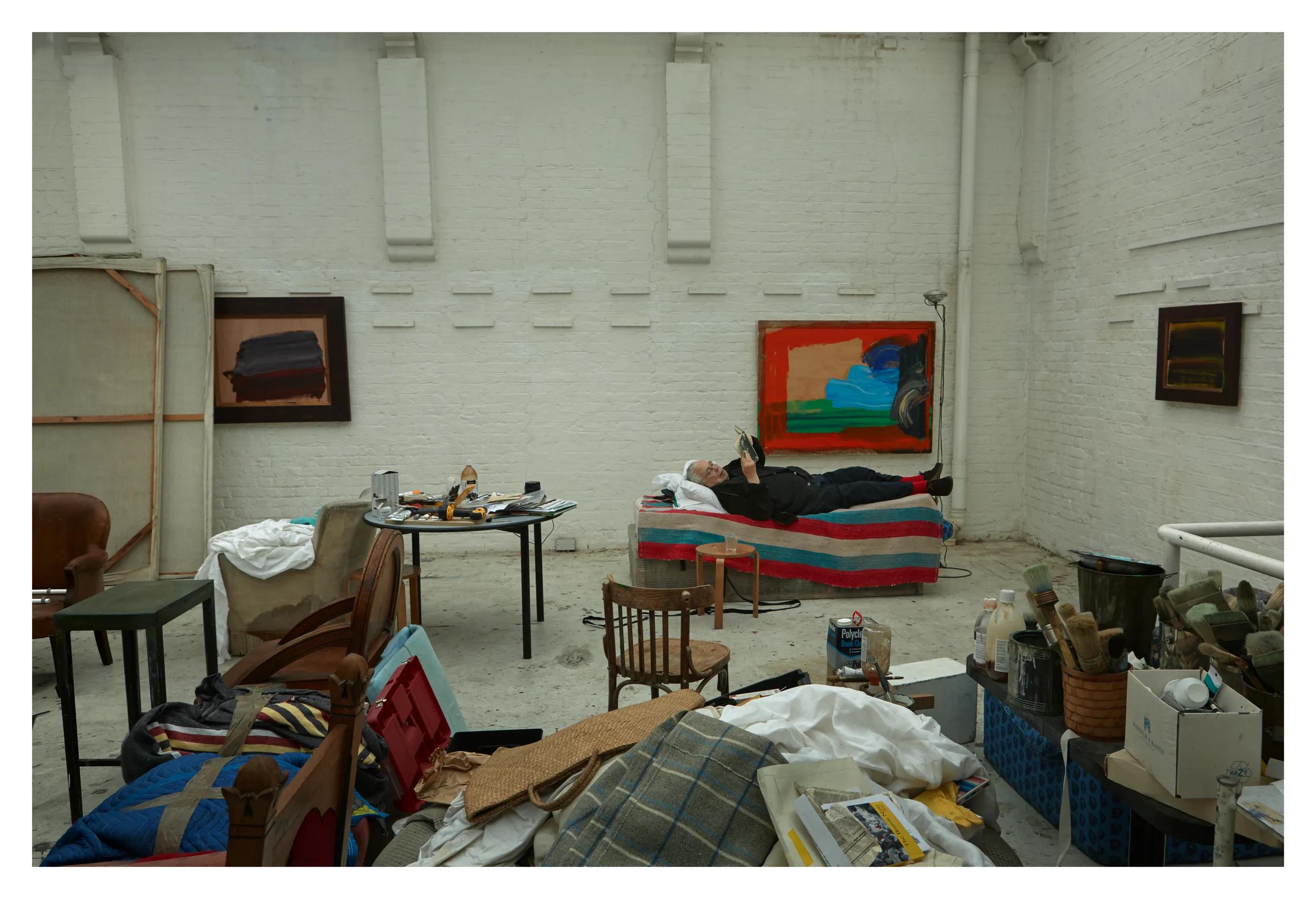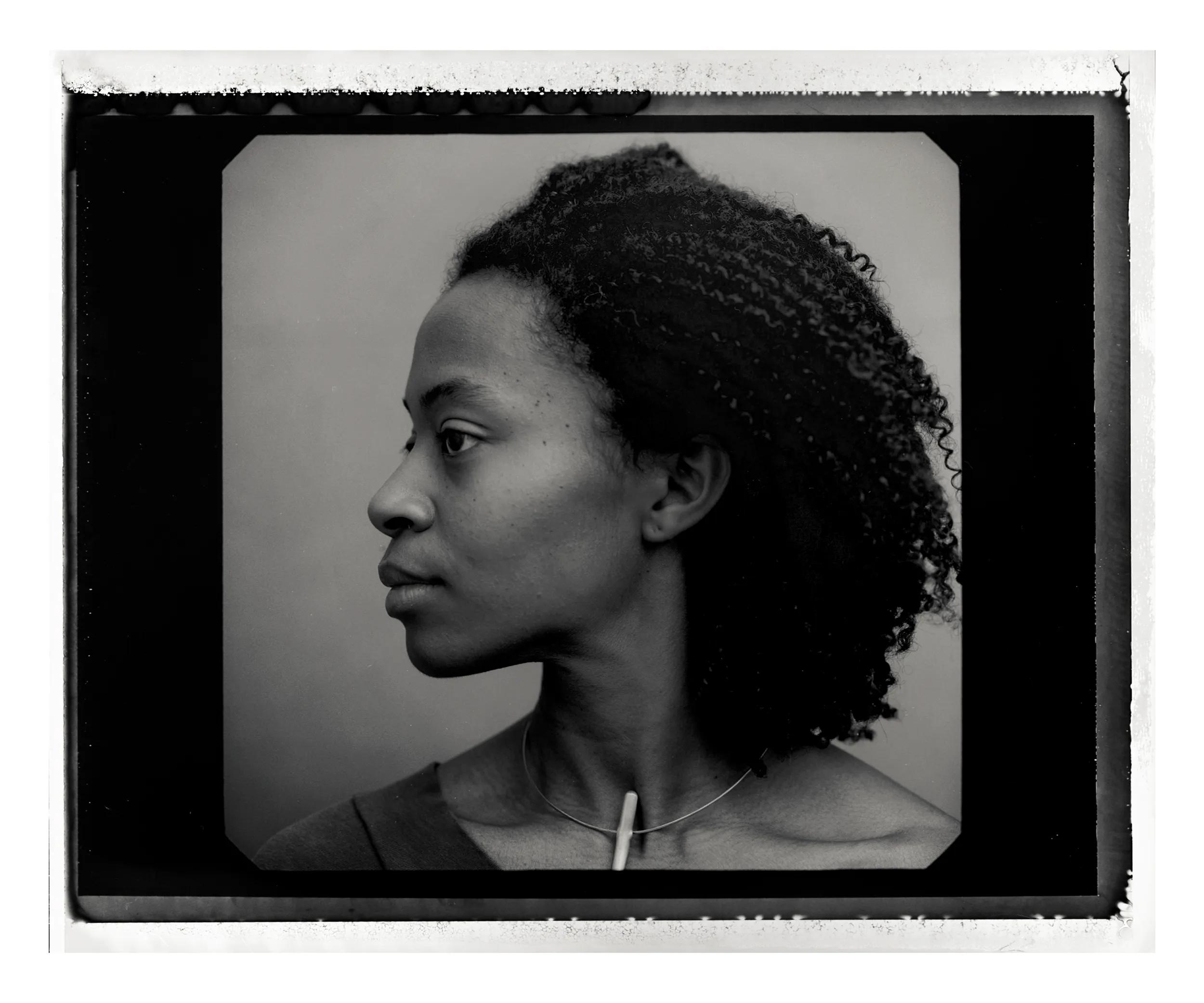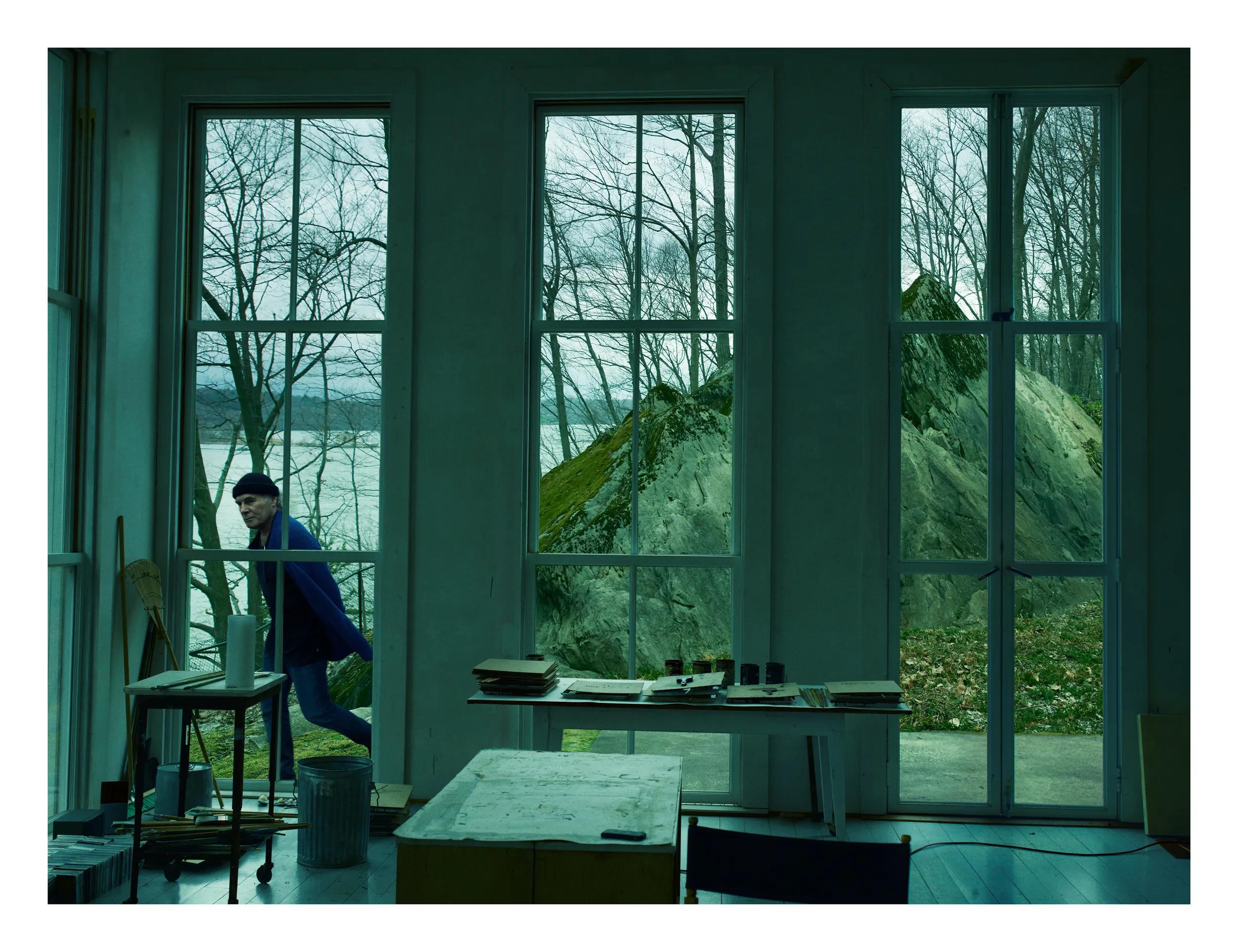Opening this November, ‘Annie Leibovitz: Stream of Consciousness’ presents a group of works by the distinguished American artist. Foregoing a linear timeline or conventional thematic constraints, the exhibition is conceived to reveal glimpses into Leibovitz’s highly associative thought processes, creating a fluid visual dialogue among photographs that aren’t anchored in the moment they were made. ‘Stream of Consciousness’ will include landscapes, still lifes and portraits.
‘Exhibitions of my work are usually arranged chronologically. The images tell a story shaped by time. But there are some photographs—Georgia O’Keeffe’s red hill, the portrait of Joan Didion in Central Park—that rhyme with photographs from other places, other times. They aren’t moored to the moment they were made. I keep returning to these images’ — Annie Leibovitz

The four images that visitors will see first upon entering the exhibition are the Selldorf suite of photographs, which was created at the historic Frick Collection on East 70th Street in New York City just days after Leibovitz returned from a visit with Annabelle Selldorf at the architect’s home in Maine. Selldorf had been charged with the sensitive task of the revered museum’s renovation and she had spoken to Leibovitz about the design challenges she was addressing. It was at their meeting at the construction site in Manhattan that Leibovitz composed these images.

‘Stream of Consciousness’ features both familiar images of iconic writers, performers and visual artists—Amy Sherald, Billie Eilish and Salman Rushdie are among them—and images that have never been exhibited publicly before.
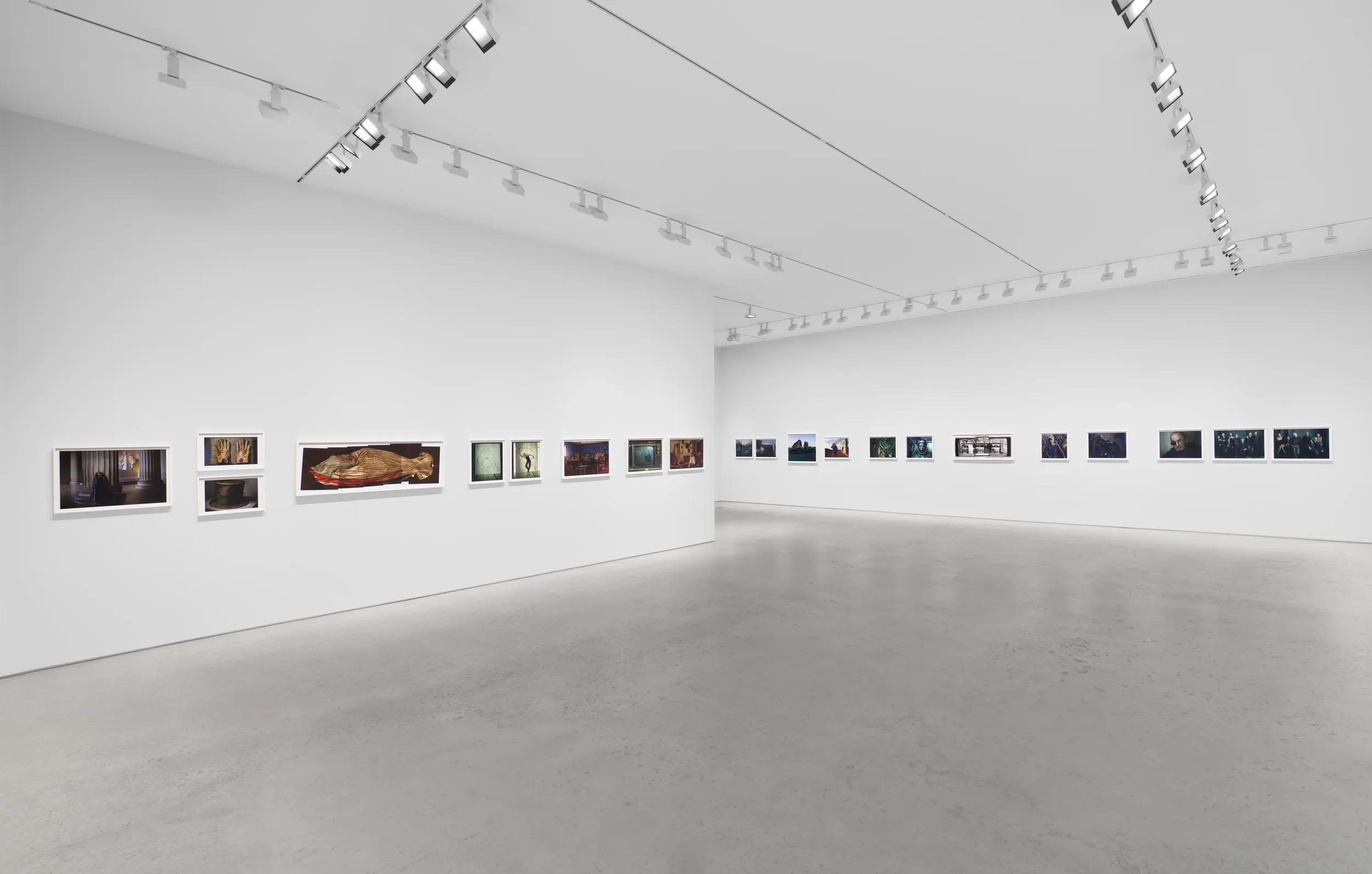
‘Stream of Consciousness’ includes portraits of contemporary cultural figures such as Supreme Court Justice Ketanji Brown Jackson and Stephen Hawking alongside images of landscapes, interiors and historical ephemera—Abraham Lincoln’s top hat and Elvis Presley’s bullet-riddled television. The associative juxtapositions show Leibovitz’s diverse range of subjects and ability to balance intimacy and theatricality, the exquisitely personal and the grandly universal. Her eye is guided by intuition and a preternatural sense of narrative.
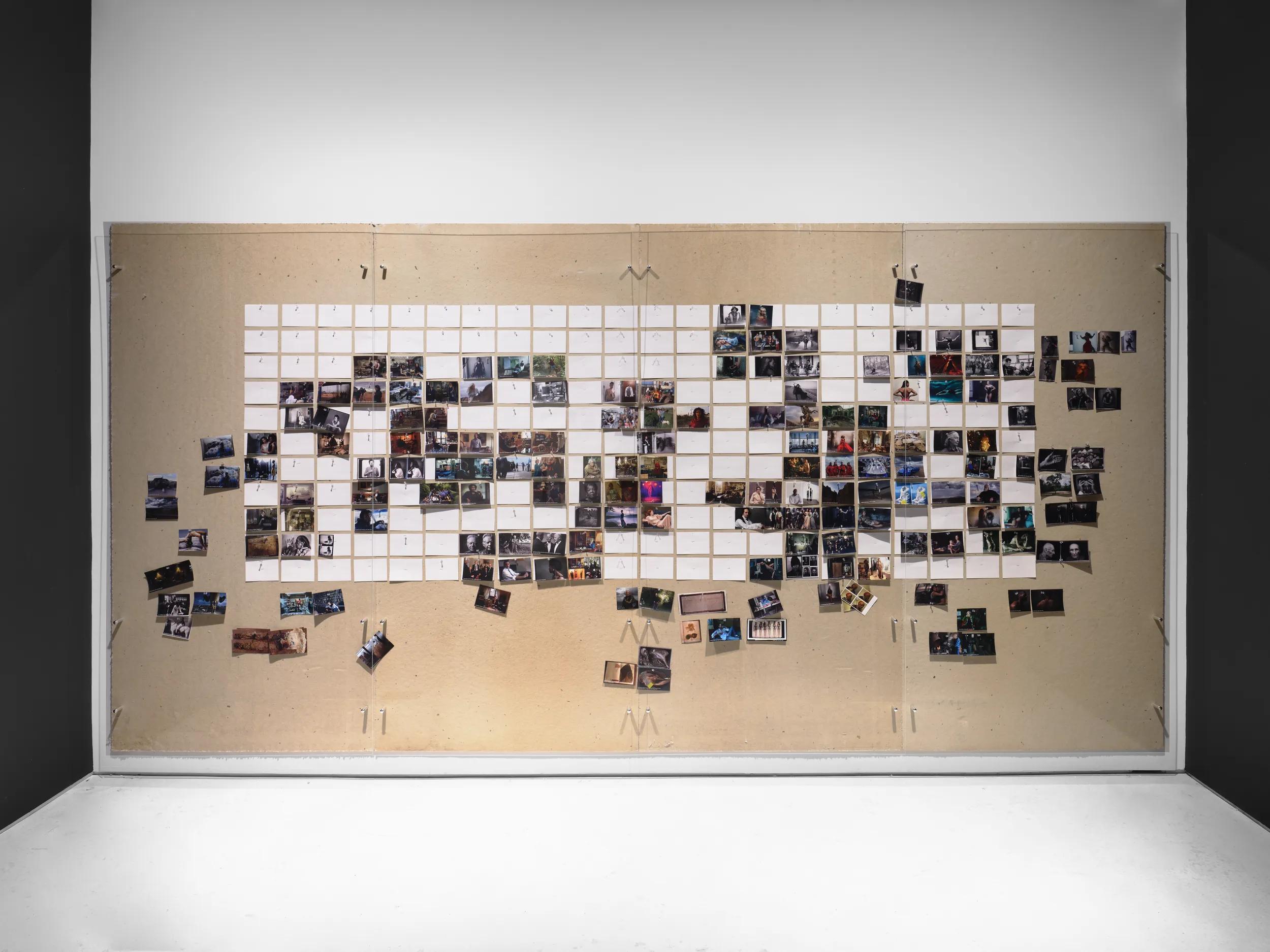
About the Artist
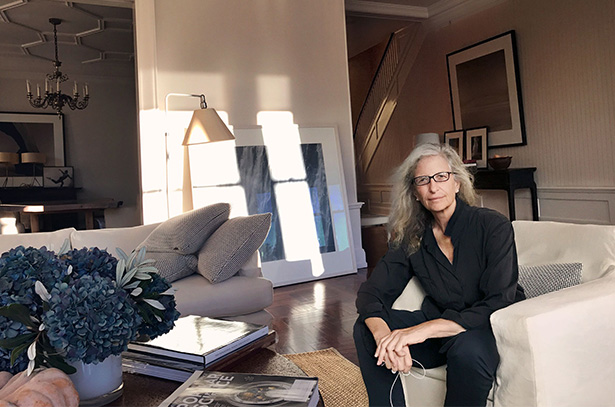
Annie Leibovitz
Annie Leibovitz was born in 1949 in Connecticut. She bought her first camera in the summer of 1968, when she was a student at the San Francisco Art Institute, and her early works are punctuated by images of the Bay Area landscape and photographs shot during drives the artist often took on the highways between San Francisco and Los Angeles. She switched majors from painting to photography, and while still a student, in 1970, she approached Rolling Stone magazine—just three years after its inception—with a few of her pictures. Some of them were published, thus beginning her career as a photojournalist and embarking on what would develop into a symbiotic relationship between the young photographer and a magazine famous for reflecting the American zeitgeist. Leibovitz’s first major assignment was for a cover story on John Lennon.Leibovitz became Rolling Stone’s chief photographer in 1973, and by the time she left the magazine, she had amassed 142 covers and published photo essays on scores of stories, including the 1975 Rolling Stones tour. Moments of freedom and an unyielding imagination fed the evolution of Leibovitz’s photography. The monumental body of work taken during her thirteen-year tenure at Rolling Stone blurred the lines between celebrity and civilian, interviewer and interviewee, artist and subject, dissolving the boundary separating Leibovitz from those captured in her photographs. Documenting fellow reporters and photographers in addition to their subjects, Leibovitz highlighted those hidden behind the camera and brought them to the forefront.
Leibovitz recorded major political moments of the Seventies in the United States, including the 1972 presidential campaign, which she covered with the writer Hunter S. Thompson. In a haunting photograph taken when President Richard Nixon resigned, on August 9, 1974, Leibovitz’s camera records his helicopter as it takes off from the White House lawn. Her immersion within the political landscape extended to photographs from the 1976 election, when figures such as Jerry Brown and Jimmy Carter seized national attention. The artist photographed the Democratic National Convention in New York City, showcasing candid moments with Dianne Feinstein and journalists such as Sally Quinn and Dan Rather. Leibovitz’s unobtrusive lens implicates both the photographer and her colleagues as significant actors and contributors to cultural moments.
When traveling with the Rolling Stones to document their tour of the Americas in the summer of 1975, Leibovitz entered the band’s world to such a degree that only her camera served as a reminder of her identity. It was Leibovitz’s distinct ability to immerse herself in varying environments that enabled a direct engagement with her subjects, revealing their true, honest, and perhaps most vulnerable selves.
Leibovitz began using a medium-format camera that produced square photographs and was appropriate for shooting set-up portraits with a strobe light. The planned portraits were based on a straightforward idea often stemming from a deeply personal collaboration with her subjects. Evidencing a level of uncanny intimacy and an uncommon depth of engagement, this relationship can be seen in one of her most celebrated photographs, in which a naked John Lennon clutches Yoko Ono. The portrait, made on December 8, 1980, was meant to serve as an intimate emblem of the couple’s relationship. When Lennon was killed just hours after the photo was taken, the image became a powerful visual memorial.
In 1983, when Leibovitz joined the staff of the revived Vanity Fair, she was established as the foremost rock-music photographer and an astute documentarian of the social landscape. At Vanity Fair, and later at Vogue, she developed a large body of work—portraits of actors, directors, writers, musicians, athletes, and political and business figures, as well as fashion photographs. Leibovitz’s portraiture reflects a signature technique she developed early in her career, as she consciously and consistently fit style to subject through collaborating with her subjects, photographing them in their homes or in a location that meant something to them, where friends, lovers, children, and other personal markers might appear.
Annie Leibovitz’s prolific output and her inventive approach to photography itself position her distinctly within the traditions and trajectory of American portraiture during the twentieth century. Her unique photographic language dovetailed with—and advanced—the medium’s evolution as a force for art making. The singularity of her vision, which included combining portraiture with photojournalism that captured historical and cultural touchstones throughout the United States and abroad, places her within a lineage of some of her personal heroes—artists like Andy Warhol and Richard Avedon, both innovators of their mediums. Influences such as Robert Frank and Henri Cartier-Bresson inspired Leibovitz to turn the tide on photography’s reception. Combining Frank’s highly personal and emotional style of photographic reportage with Cartier-Bresson’s Surrealist and even sculptural art photography, Leibovitz embraced her own inclination toward personal journalism. The artist’s large and distinguished body of work encompasses some of the most well-known portraits of our time.
Leibovitz is the recipient of many honors. In 2006 she was made a Commandeur in the Ordre des Arts et des Lettres by the French government. The previous year, in a compilation of the forty top magazine covers of the past forty years by the American Society of Magazine Editors (ASME), she held the top two spots (#1 for the photograph of John Lennon and Yoko Ono taken for Rolling Stone the day Lennon was shot, and #2 for the pregnant Demi Moore in Vanity Fair). In 2009, she received the International Center of Photography’s Lifetime Achievement Award, ASME’s first Creative Excellence Award, and the Centenary Medal of the Royal Photographic Society in London. In 2012, she was the recipient of the Los Angeles Museum of Contemporary Art Award to Distinguished Women in the Arts and the Wexner Prize. In 2013 she received the Prince of Asturias Award for Communication and Humanities. She was the inaugural recipient of the San Francisco Museum of Modern Art Contemporary Vision Award in 2015. In 2018, she received a Lifetime Achievement Award for Excellence in the Arts from the National Museum of Women in the Arts. Leibovitz has been designated a Living Legend by the Library of Congress. She lives and works in New York.
Current Exhibitions
1 / 12






